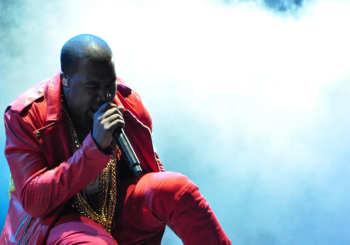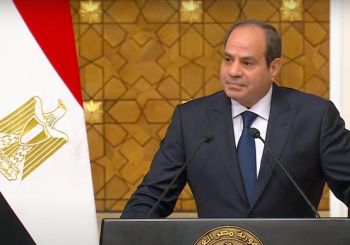Egyptian dialect, known colloquially as ‘ammia, is the most widely spoken and understood across the Arab World. Its international status took shape in the twentieth century, when the country’s musical industry, cinema, and later broadcast media grew to regional dominance.
Yet, the Egyptian Arabic known to the rest of the world through these channels was never a mirror of the language spoken on the country’s streets.
The dialect spoken by stars on screen during Egyptian cinema’s Golden Age (from the 1940s to the 1960s), used in radio broadcasts, or even most literary works written in ‘ammia, was in fact an elevated Cairene, representing only a small fraction of the country’s many Arabic tongues.
With influences from both indigenous and foreign languages, and just as many regional dialects, Egyptian Arabic today is as diverse as the country itself.
Egyptian Arabic from Islamic to European conquests
Arabic was spoken in the Sinai and Eastern Desert long prior to the advent of Islam, but spread to the rest of Egypt through the Islamic conquests in the seventh century. By the tenth century, it had largely displaced Coptic as the country’s primary language.
Because this transition took place over a winding four hundred years, researchers believe that early Egyptian Arabic was heavily influenced by Coptic, resembling some combination of the two. Later, mass waves of migration from Andalusia in the thirteenth century would bring a third element into the mix.
Ever since, Egyptians’ spoken language has been shaped by successive waves of colonial invasion.
The first major colonial influence on Egyptian Arabic was Turkish, imported from the Ottoman empire’s centuries-long rule. Its remnants still permeate the Egyptian vocabulary, with terms like ‘oda’ (room), ‘tamam’ (okay), and ‘dolab’ (cupboard), all derived from Turkish.
In the late nineteenth and twentieth centuries, French and English at their turn came to influence the spoken dialect of Egypt, particularly in the cosmopolitan centers of Cairo and Alexandria. Today, colonially-imported words like ‘ascenseur’ (elevator), ‘buffet,’ or the Alexandrian ‘goma’ (eraser, from the French ‘gomme’) still speckle the country’s urban vernaculars.
English has also come to form part and parcel of Egypt’s spoken language. Arabic alternatives to words like ‘menu,’ ‘sandwich’ or ‘cans’ have been made almost archaic. The future tense contraction, ‘ha’ + verb, is also frequently modeled to English infinitive verbs, with phrases like ‘ha-copy’ or ‘ha-check’ populating everyday speech.
Yet, despite these successive colonial regimes, a prominent influence on contemporary Egyptian Arabic across provinces remains the indigenous Coptic language.
Linguist Wilson Bishoy explains that Coptic continued to be used by some Egyptians as late as the seventeenth century, allowing it to leave a distinctive mark on the country’s spoken Arabic, especially at the level of grammar and syntax.
Examples include the reversed order of verbs and interrogative nouns in questions, or the use of ‘ma’ as an imperative prefix — both structures borrowed from Coptic and which do not occur in other Arabic dialects. Alongside these rules are a flurry of inherited words ranging from names of agricultural tools to the expletive ‘bekh’ (boo!), or the colloquial ‘balbous’ (naked).
For this reason, heritage researcher Sami Harak goes so far as to argue that the Arabic spoken in the country today is only one evolutionary stage of Egyptian language from antiquity to the present day — a language in its own right, rather than a dialect.
The many Arabic dialects of Egypt
Both local and European researchers have produced extensive descriptions of Egyptian Arabic since the late 1800s. Nearly all of these works, however, claimed to describe ‘the Arabic dialect of Egypt,’ giving the false impression that there is only one.
In reality, the Arabic dialects spoken across Egypt differ vastly across regions, provinces, and even between neighboring cities and towns. Though it would be hard to provide a comprehensive delineation of Egyptian Arabic dialects, researchers broadly divide them into seven groups.
Cairene or ‘Massri’ is the group of dialects spoken in the capital and surrounding cities. Like most Egyptian vernaculars, it is strongly influenced by Coptic, but also bears traces of Turkish, English, and French, owing to the city’s status as a melting pot for foreigners and locals.
Cairene dialect is the Egyptian dialect best known to the rest of the world. It is also the most widely spoken and understood across the country, owing to rural-urban migrations and the centralization of media and cultural production in the capital.
Though not all sources classify them as dialects, the varieties of Egyptian Arabic spoken in the cities of Alexandria and Port Said — respectively in the west and eastern Delta — are recognized as different from Cairene Arabic despite predominant similarities.
Rural Delta Egyptian Arabic, or ‘Fellahi’, is the group of dialects spoken in the rural areas of Northern Egypt. These dialects were first studied extensively by Egyptian scholar Fahmi Abul-Fadl in 1961, who published the outcomes of his research in the form of maps.
Today, the Ethnologue guide divides them broadly into West, East, and South Delta Arabic. While vernaculars vary from city to city, this group of dialects shows several joint grammatical deviations from urban speech, including the use of the plural form to describe individual action.
Saidi, or Upper Egyptian, is the group of dialects spoken in Upper Egypt, and was first studied extensively by Abdelghany Khalafallah in 1969, who divided it into Northern and Southern Saidi. In his overview, the first group encompasses the South of Giza, Beni Suef, Minya, and parts of Fayoum, while the second comprises Assiut, Suhag, Qena, and Aswan.
Saidi has numerous sub-dialects that vary significantly between towns, with some iterations even difficult for northern Egyptians to understand. According to the Ethnologue guide, its predominant varieties are closer to peninsular Arabic, but with strong influences from Coptic and Cairene Arabic. Father south, vernaculars share more similarities with Sudanese Arabic.
Badawi, the group of dialects spoken by Bedouin communities in the Sinai Peninsula and Eastern Desert, enjoys a special status. It is in fact less akin to the rest of Egypt’s dialects than to the Bedouin vernaculars of neighboring Syria, Jordan, Palestine, and Saudi Arabia; with Arabic roots dating back to pre-Islamic times.
Western Egyptian Badawi, meanwhile, is actually classified by linguists as a Libyan dialect. Spoken near the Libyan border, on the westernmost edges of the Beheira governorate and in Wadi El Natrun, it is actually inaccessible to most Egyptian Arabic speakers.
Evolving social perceptions
Provincial dialects have historically been marginalized in favor of Cairene Arabic, held up as an aspirational standard. Other dialects were, and are still at times, associated with a lack of education or worldliness, and often cartoonishly misrepresented on screen.
Over the twentieth century, writers like Abdel Rahman El Abnudi, Amal Donqol, and others hailing from the south of Egypt sought to honor and popularize rural dialects, writing poetry in their native vernaculars and electing to speak it in media interviews.
According to one study carried out in 2015, the fruits of those efforts have begun to flourish in recent years, with rural dialects now more widely associated with the positive attributes of generosity, piety, bravery, and communal solidarity.
Speaking to Al-Jazeera in 2021, Ashraf Khater, a salesman who moved to the capital from Asyut, recounted that twenty years ago, his dialect was ridiculed by Cairene colleagues. Today, however, he finds that his native accent is more widely understood and appreciated by peers in the city.
Khater attributes the positive change to the fact that mainstream films and television series increasingly showcase stories from beyond the capital, as well as to growing contact between Cairenes and their rural counterparts through internal migration.
Whatever the reason, Egyptians seem to be slowly embracing, rather than rejecting the immense diversity of their spoken language, which mirrors the country’s millenia-long history as a melting pot of peoples and cultures.







Comments (3)
[…] post Egyptian Arabic: A Mosaic of Languages and Dialects first appeared on Egyptian […]
[…] Source link […]